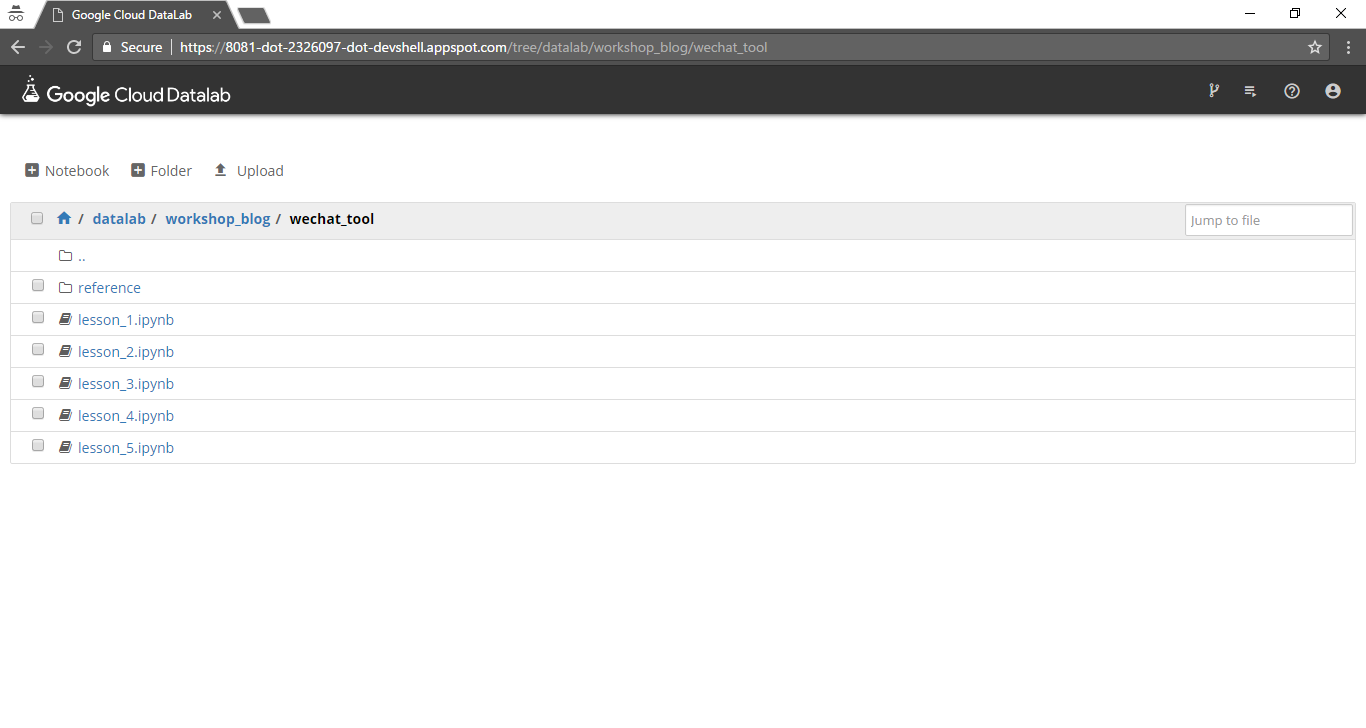Firstly, please open this README document using your own web browser: https://github.com/telescopeuser/workshop_blog
YouTube
- [第一课] https://youtu.be/W-ZsWqcl1_c
- [第二课] https://youtu.be/FPgo-hI7OiE
- [第三课] https://youtu.be/yZV-XCSmWQY
- [第四课] https://youtu.be/4m44aPkLY2k
- [第五课] https://youtu.be/leVZjVahdKs
- [第六课] [To be announced]
优酷 [To be announced]
Workshop series: How to embed advanced machine intelligence into a chatbot for social media App WeChat, using Google cloud and machine learning APIs
by: Sam Gu [ Data Science Trainer @ 酷豆数据科学 ]
April 2017 ====== Scan the QR code to add me in WeChat ====>>
Acknowledgement
- 谷歌提供的云平台和机器智能引擎:https://cloud.google.com/products/machine-learning/
- ItChat工作组提供的微信程序接口:https://github.com/littlecodersh/ItChat
- 使用和开发微信个人号聊天机器人:一种Python编程接口 (Use WeChat Python API)
- 用微信App "扫一扫" QR码图片来自动登录 (Log-in WeChat account)
- 查找指定联系人或群聊 (Scan contact list)
- 发送信息(文字、图片、文件、音频、视频等) (Send message: text, image, file, voice, video, etc)
- 接收信息 (Receive message, and keep 'listening')
- 自动回复 (Receive message and then automaticaly reply)
- 自定义复杂消息处理,例如:信息存档、回复群聊中被@的消息 (Advanced message processing and reply)
-
识别图片消息中的物体名字 (Recognize objects in image) [1] 物体名 (General Object) [2] 地标名 (Landmark Object) [3] 商标名 (Logo Object)
-
识别图片消息中的文字 (OCR: Extract text from image) 包含简单文本翻译 (Call text translation API)
-
识别人脸 (Recognize human face) 基于人脸的表情来识别喜怒哀乐等情绪 (Identify sentiment and emotion from human face)
-
不良内容识别 (Explicit Content Detection)
- 消息文字转成语音 (Speech synthesis: text to voice)
- 语音转换成消息文字 (Speech recognition: voice to text)
- 消息文字的多语言互译 (Text based language translation)
- 消息文字中名称实体的识别 (Name-Entity detection)
- 消息文字中语句的情感分析 (Sentiment analysis, Sentence level)
- 整篇消息文字的情感分析 (Sentiment analysis, Document level)
- 语句的语法分析 (Syntax / Grammar analysis)
- 识别视频的场景片段 (Detect shots change in video)
- 识别视频消息中的物体名字 (Recognize objects in video/shots)
- 直接搜索视频内容 (Search content in video)
- 多语言翻译器 (Language translator)
- 图文多媒体的订阅和点播 (Multi-media broadcast & on-demand subscription)
- 文章的概括和缩写 (Automatic article summary)
- 不良图片的识别;不良视频片段的自动识别和定位 (Explicit content detector: i.e. adult content or violent content)
- 基于商品图片的搜索和商家价格比较 (Best retail price finder using an image of goods)
Option 1: Use a Virtual Machine to run in your own computer (Difficulty level: Easy, like being a boss)
-
Download a pre-configurated virtual machine, which contains all environment setup and workshop notebooks. [Download Link to be announced]
-
Start the VM using Virtualbox. Virtualbox free download: https://www.virtualbox.org/wiki/Downloads
-
Open a web browser, go to url:
To use python 2: http://127.0.0.1:8080/tree
To use python 3: http://127.0.0.1:8082/tree
-
Update/pull latest workshop python notebooks from Github: https://github.com/telescopeuser/workshop_blog.git
Create an account in Google Cloud Platform (GCP)
-
Complete GCP Registration: https://cloud.google.com/free/ <--- In case you are lost here, quick guide: https://cloud.google.com/getting-started/
-
Go to GCP Console: https://console.cloud.google.com/home
-
Create a new project:
project id: kudosdata01 [This is uniquie GCP project-id, which you MUST change to your own id.]
project name: kudosdata01 [You MAY change to your own name.]
zone: asia-east1-b [Choose a data center near your location.]
-
Enable GCP Compute Engine API for new project, using GCP API Manager
Start Datalab (Jupyter python notebook) using Cloud Shell
-
Create/Connect a GCP Compute Engine virtual machine to use Datalab: kudosdata01-vm-datalab-workshop <--- In case you are lost here, quick guide: https://cloud.google.com/datalab/docs/quickstarts
gcloud projects list
gcloud config set core/project kudosdata01 [your own unique project-id]
gcloud config set compute/zone asia-east1-b
datalab create kudosdata01-vm-datalab-workshop --zone asia-east1-b [1st time for creation]
datalab connect kudosdata01-vm-datalab-workshop [2nd time for connection]
datalab stop kudosdata01-vm-datalab-workshop [stop VM after use]
-
Open Datalab in web browser, then create a new notebook from datalab folder, then run below two command in notebook cell:
!git clone https://github.com/telescopeuser/workshop_blog.git
%load workshop_blog/setup_cloud.py
-
Install Anaconda3 (This software includes many useful tools: Python3, Jupyter Notebook, pip) https://www.continuum.io/downloads
-
Install Git & Git Bash https://git-scm.com/downloads
-
Install WeChat API package for Anaconda / python
pip install -U html
pip install -U qrcode
pip install -U itchat
-
Download workshop python notebook code from Github: https://github.com/telescopeuser/workshop_blog.git
-
Start Jupyter Notebook (Here I use Git Bash command line tool)
-
Open a web browser if it's not started automatically. Go to url: http://localhost/tree




